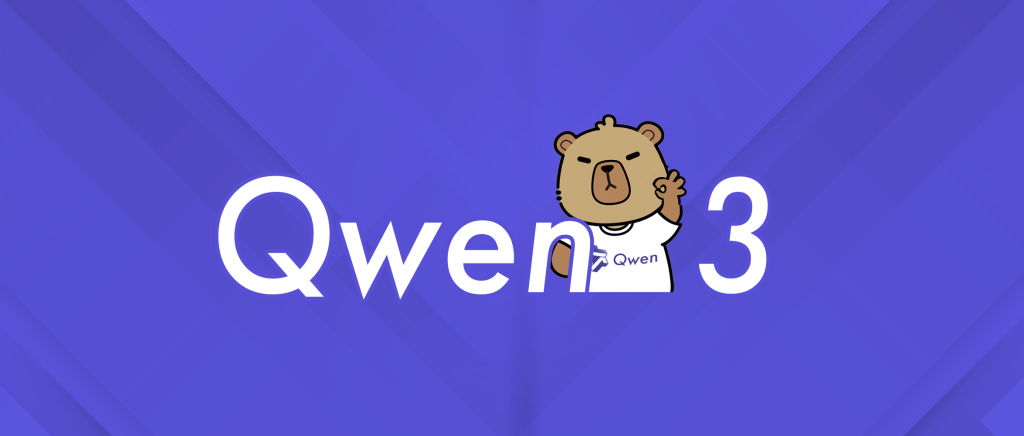How to Run and Fine-Tune Qwen3 Locally: A Complete Guide to Unsloth Dynamic 2.0 Quantization

Unlock the full potential of large language models with Qwen3 and Unsloth’s cutting-edge quantization technology.
Why Qwen3 Stands Out in the AI Landscape
1.1 Unmatched Performance in Reasoning and Multilingual Tasks
Alibaba Cloud’s open-source 「Qwen3 model」 redefines benchmarks for logical reasoning, instruction-following, and multilingual processing. Its native 「128K context window」 (equivalent to 200,000+ Chinese characters) allows seamless analysis of lengthy technical documents or literary works, eliminating the “context amnesia” seen in traditional models.
1.2 The Quantization Breakthrough: Unsloth Dynamic 2.0
Experience minimal accuracy loss with 「80% model size reduction」:
-
「5-shot MMLU leaderboard dominance」: Outperforms competitors in complex problem-solving -
「Optimized KL Divergence」: Generates human-like, coherent responses -
GGUF/Safetensor support: Compatible with all major inference frameworks
Hardware Requirements and Model Selection
2.1 Device Compatibility Chart
| Model Variant | Recommended Specs | Use Case |
|---|---|---|
| 32B-A3B | RTX 3090 GPU + 32GB RAM | Local development/Research |
| 235B-A22B | Multi-A100 GPU cluster | Enterprise AI solutions |
| 4-bit Quantized | RTX 3060 GPU + 16GB RAM | Hobbyist experimentation |
2.2 Download Best Practices
-
All versions now feature universal compatibility (Updated April 29, 2025) -
Find pre-quantized models on Hugging Face: Search unsloth/Qwen3 -
New user tip: Start with Q4_K_XLfor optimal speed-accuracy balance
Three Methods to Run Qwen3 Locally
3.1 Ollama Quickstart (Beginner-Friendly)
「Deployment Steps:」
# 1. Install dependencies
sudo apt-get update && sudo apt-get install pciutils -y
# 2. Install Ollama
curl -fsSL https://ollama.com/install.sh | sh
# 3. Launch 32B model
ollama run hf.co/unsloth/Qwen3-32B-GGUF:Q4_K_XL
「Pro Tips:」
-
Monitor progress with --verboseflag -
Adjust creativity using /set temperature 0.7 -
Press Ctrl+Dto exit interactive mode
3.2 Llama.cpp Advanced Setup
「Environment Configuration:」
# 1. Install build tools
sudo apt-get install build-essential cmake libcurl4-openssl-dev
# 2. Compile with CUDA support
git clone https://github.com/ggml-org/llama.cpp
cd llama.cpp && mkdir build && cd build
cmake .. -DGGML_CUDA=ON -DLLAMA_CURL=ON
make -j
「Running 235B Model:」
./llama-cli --model Qwen3-235B-A22B-UD-IQ2_XXS.gguf \
--n-gpu-layers 99 --ctx-size 16384 \
--prompt "<|im_start|>user\nWrite a technical review on quantum computing's impact on cryptography<|im_end|>"
「Performance Tweaks:」
-
-ot ".ffn_.*_exps.=CPU": Offload MoE layers to CPU -
--threads 32: Match physical CPU cores -
--temp 0.6: Balance creativity and stability
3.3 Thinking Mode vs Direct Mode
「Feature Comparison:」
| Feature | Thinking Mode | Direct Mode |
|---|---|---|
| Response Speed | Slower (additional processing) | Instant |
| Output Structure | Includes <think> blocks |
Final answer only |
| Best For | Research papers/Complex coding | Quick Q&A/Summarization |
「Implementation Code:」
# Enable thinking mode (default)
text = tokenizer.apply_chat_template(
messages,
tokenize=False,
add_generation_prompt=True,
enable_thinking=True
)
# Switch to direct mode
text = tokenizer.apply_chat_template(
messages,
tokenize=False,
add_generation_prompt=True,
enable_thinking=False
)
Troubleshooting Common Issues
4.1 Solving GPU Memory Errors
「Error Example:」 CUDA out of memory
「Fix Checklist:」
-
Use lower-bit quantizations (e.g., Q4_K_M → Q3_K_M) -
Limit GPU layers: --n-gpu-layers 40 -
Enable CPU offload: -ot ".feed_forward.*=CPU"
4.2 Optimizing Chinese Output
「Prompt Engineering Template:」
<|im_start|>system
You are a Chinese-speaking AI assistant. Follow these guidelines:
1. Use conversational language
2. Add emojis for readability
3. Highlight key numbers with **bold**
<|im_end|>
<|im_start|>user
Explain quantum entanglement using metaphors<|im_end|>
4.3 Preventing Repetitive Output
「Golden Parameter Set:」
--temp 0.6 # Control randomness (0-1)
--top-p 0.95 # Nucleus sampling threshold
--min-p 0.01 # Probability floor
--repeat_penalty 1.1 # Reduce word repetition
Future Developments: Fine-Tuning Preview
5.1 Upcoming Features
-
「Domain Adaptation Kits」: Legal/medical terminology support -
「Multi-Turn Dialogue Optimizer」: Enhanced conversation continuity -
「LoRA Integration」: Customize models with 1% training data
5.2 Fine-Tuning Checklist
-
Dataset: Minimum 500 instruction-response pairs -
Hardware: 24GB+ VRAM (A6000 recommended) -
Environment: Python 3.10+ + PyTorch 2.0+
Real-World Application Examples
6.1 Automated Technical Documentation
「Sample Prompt:」
<|im_start|>user
Create PyTorch deployment guide covering:
1. ONNX conversion
2. TensorRT acceleration
3. Common error solutions
<|im_end|>
「Output:」 Structured Markdown tutorial with verified code snippets.
6.2 Game Development Assistant
「Flappy Bird Implementation Snippet:」
# Pipe generation logic
pipe_height = random.randint(100, 300)
pipe_color = choice(["#556B2F", "#8B4513", "#2F4F4F"])
# Collision detection
if bird_rect.colliderect(pipe_rect):
show_game_over(best_score)
Resource Hub and Updates
7.1 Official Channels
| Platform | Key Resources |
|---|---|
| Hugging Face | unsloth/Qwen3 model series |
| GitHub | ggml-org/llama.cpp framework |
| Alibaba Cloud | Qwen technical white papers |
7.2 Update Tracking Strategies
-
⭐ Star Hugging Face repositories -
WatchGitHub repos for notifications -
Join Discord developer communities
